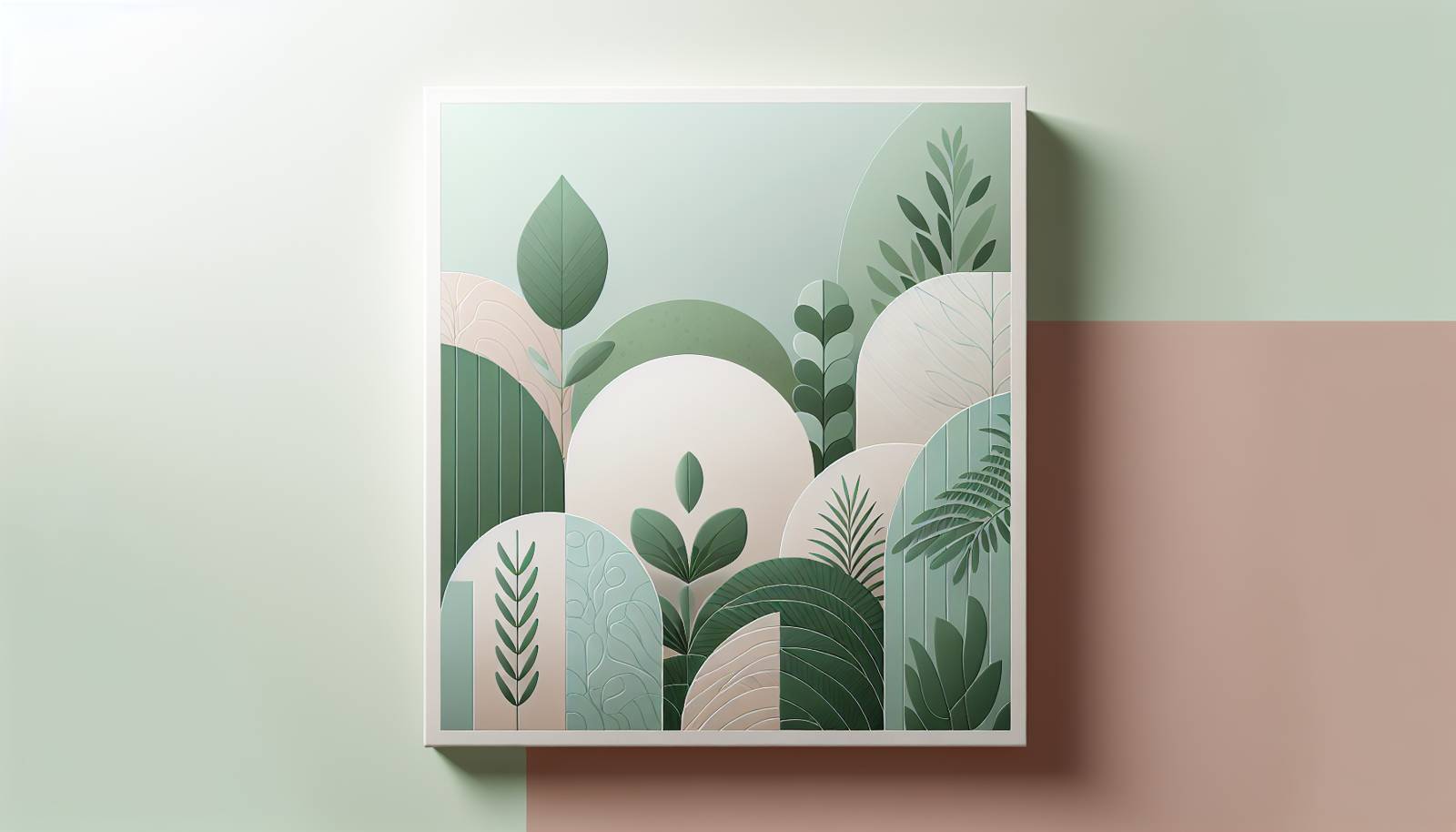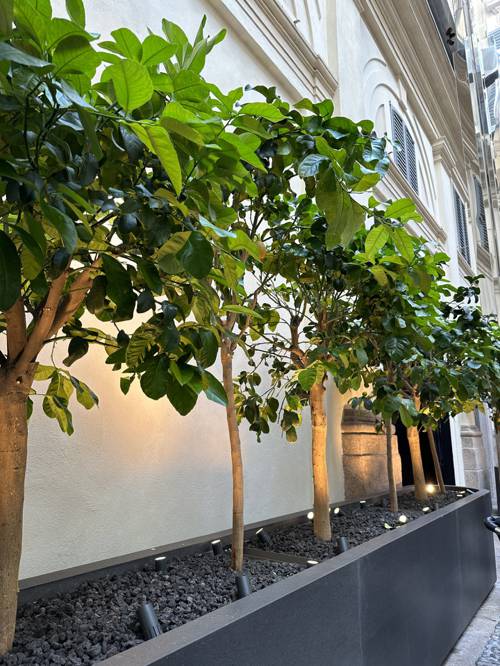
FAQ About Indoor Plant Aesthetic Balance

What is indoor plant aesthetic balance?
Indoor plant aesthetic balance refers to the harmonious arrangement of plants within an indoor space to enhance visual appeal while ensuring the plants can thrive. It involves choosing plants that complement the room's decor and designing arrangements that provide the right conditions for plant growth. The goal is to create a beautiful yet functional indoor garden that fits a space's style and atmosphere.

How can indoor plants affect room aesthetics?
Indoor plants can significantly enhance room aesthetics by adding color, texture, and life to otherwise static environments. They can soften architectural lines, provide focal points, and create a sense of tranquility and natural beauty. Well-placed plants can complement furniture, artwork, and the overall design theme of a room, contributing to a more inviting and dynamic space.

Which indoor plants are best for aesthetic balance?
The best indoor plants for aesthetic balance depend on your specific decor style. Popular choices include Monstera deliciosa for a tropical feel, succulents for a minimalist look, and ferns for a touch of greenery that suits most decor styles. Consider plant colors, shapes, and sizes in harmony with your room's design to create cohesive aesthetics.

How do I choose indoor plants that complement my decor?
To choose indoor plants that complement your decor, start by analyzing your space's color palette, textures, and style. Select plants that echo these elements, such as ferns for a rustic feel or orchids for elegance. Also, consider the plant's size and form to ensure they align with the room's scale and architecture. Experiment with different plant arrangements until you find the combination that enhances your decor's overall look.

What are the essential factors for maintaining plant growth indoors?
Essential factors for maintaining indoor plant growth include adequate light, proper watering, appropriate temperature and humidity, and suitable soil. Each plant species may have specific requirements, so it's important to research the needs of your chosen plants. Providing the right environment ensures that the plants remain healthy and vibrant, contributing positively to the aesthetic balance of the space.

How can I ensure both aesthetics and functionality with my indoor plants?
To ensure both aesthetics and functionality with indoor plants, balance decorative elements with practical care principles. Position plants in aesthetically pleasing arrangements that also satisfy their light and space needs. Use decorative pots for style and choose plant varieties suited to your indoor environment to avoid compromising growth. Regular maintenance such as pruning and cleaning will also help sustain both beauty and health.

Can indoor plants improve air quality as well as aesthetics?
Yes, many indoor plants can improve air quality by filtering pollutants and increasing humidity. Plants like peace lilies, snake plants, and spider plants are known for their air-purifying qualities. Integrating these plants into your indoor space not only enhances room aesthetics but can also contribute to a healthier living environment.

What is the role of color in indoor plant aesthetic balance?
Color plays a crucial role in indoor plant aesthetic balance by influencing mood and complementing existing decor. Green, the predominant color of foliage, can have a calming effect, while blooms or variegated leaves add accents and diversity. Choosing plant colors that align with your room's color scheme can create harmony and visual interest.

How do different plant textures contribute to interior design?
Different plant textures can add depth and intrigue to interior design. For example, plants with glossy leaves, such as rubber plants, provide a modern touch, while those with soft or fuzzy leaves, like African violets, add a cozy feel. Mixing various textures can enhance the tactile and visual experience within a room, creating a more engaging and layered aesthetic.

Should I use live or artificial plants for indoor aesthetic balance?
Whether to use live or artificial plants depends on your priorities. Live plants offer growth, freshness, and health benefits but require more care and suitable growing conditions. Artificial plants offer low-maintenance decor solutions, especially in low-light or hard-to-reach areas. Blending both types can offer the best of both worlds, providing aesthetic balance with varying levels of commitment.

What is the importance of plant placement for aesthetic balance?
Plant placement is vital for aesthetic balance as it determines how plants interact with other design elements. Strategic positioning can maximize light access, ensure plants complement the room layout, and highlight architectural features. Well-placed plants can enhance symmetry, guide the line of sight, and define functional areas, contributing to a balanced and aesthetically pleasing environment.

How can I arrange multiple plants for aesthetic appeal?
To arrange multiple plants for aesthetic appeal, vary plant sizes, shapes, and heights to create layers and dimension. Use groupings of odd numbers for a natural look, and consider plant placement on different levels, such as on the floor, tables, and shelves. Mixing pots of varying materials and colors can also enhance your plant arrangement's overall design.

What are some tips for creating a minimalist indoor plant decor?
For a minimalist indoor plant decor, choose plants with simple forms, like snake plants or succulents, and opt for neutral or monochrome pots. Limit the number of plants to maintain a clean look, focusing on a few statement plants rather than overcrowding. Place plants in a way that emphasizes space and simplicity, avoiding clutter.

How do indoor plants contribute to a room's mood and ambiance?
Indoor plants contribute to a room's mood and ambiance by bringing elements of nature inside. They can create a sense of calm, reduce stress, and make a space feel more inviting. Their colors and forms can evoke certain moods, such as citrus-hued plants for energy or soft greens for relaxation, enhancing the emotional tone of a room.

What are common mistakes to avoid in indoor plant arrangements?
Common mistakes in indoor plant arrangements include overwatering, placing plants in suboptimal lighting, overcrowding, and neglecting plant health. Additionally, failing to consider plant size and scale in relation to furniture can disrupt the balance. Avoiding these mistakes involves proper research and regular plant maintenance to keep your indoor space both beautiful and functional.

How can lighting affect indoor plant aesthetic balance?
Lighting affects indoor plant aesthetic balance by influencing both plant health and visual appeal. Proper lighting ensures that plants thrive, maintaining their vibrant appearance. It also highlights the plants' textures and colors, contributing to the room's atmosphere. Both natural and artificial lighting must be considered to enhance aesthetic balance effectively.

What role do containers play in plant aesthetics?
Containers play a crucial role in plant aesthetics by complementing or contrasting with the plant and the room decor. The choice of material, color, and design should match the room's style while also providing functionality like drainage. Containers can be focal points themselves and contribute significantly to the overall aesthetic appeal of the plant arrangement.

How do I maintain aesthetic balance during seasonal changes?
To maintain aesthetic balance during seasonal changes, adapt your plant care and decor to the season. In the fall or winter, choose plants that or create arrangements that embrace seasonal colors and themes. Adjust light conditions and humidity levels as needed for plant health. Switching plants or decor elements seasonally can keep your space both aesthetically balanced and lively.

Can indoor plants be incorporated into unconventional spaces?
Yes, indoor plants can be creatively incorporated into unconventional spaces such as bathrooms, entryways, and even kitchens. Use vertical planting solutions, hanging pots, or tiered stands to maximize space usage. Selecting plants that thrive in varied light and humidity conditions can make it possible to enhance less traditional areas with greenery.

How do I balance a variety of plant types in one room?
To balance a variety of plant types in one room, aim for a cohesive theme by considering plant forms, sizes, and colors that blend well together. Arrange plants to create visual harmony, using consistent pot styles and complementary plant colors. This approach ensures that diverse plant types contribute to, rather than distract from, a room’s aesthetic balance.
